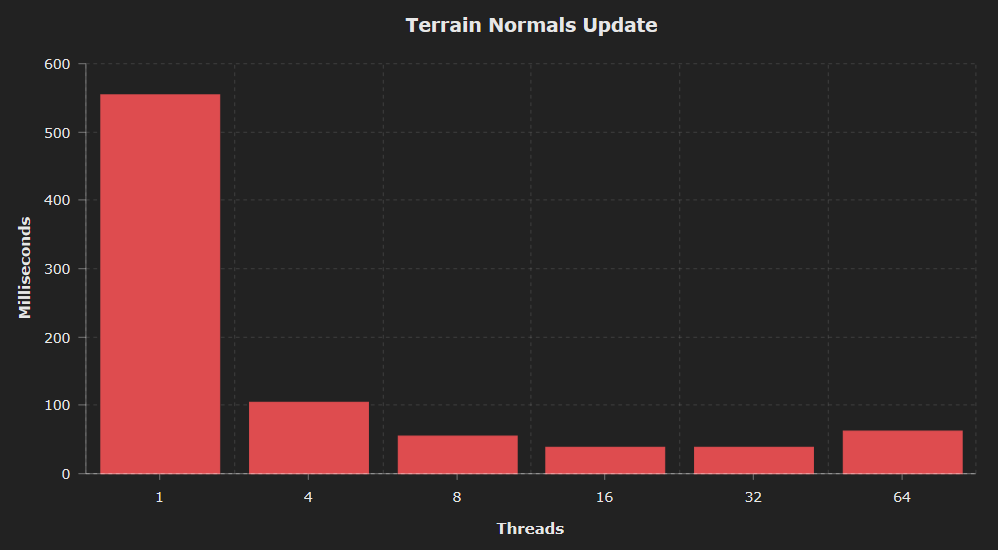Terrain Normal Update Multithreading
Multithreading is very useful for processes that can be split into a lot of parallel parts, like image and video processing. I wanted to speed up the normal updating for the new terrain system so I added a new thread creation function that accepts any function as the input, so I can use std::bind with it, the same way I have been easily using this to send instructions in between threads:
shared_ptr<Thread> CreateThread(std::function<void()> instruction);
The terrain update normal function has two overloads. Once can accept parameters for the exact area to update, but if no parameters are supplied the entire terrain is updated:
virtual void UpdateNormals(const int x, const int y, const int width, const int height); virtual void UpdateNormals();
This is what the second overloaded function looked like before:
void Terrain::UpdateNormals() { UpdateNormals(0, 0, resolution.x, resolution.y); }
And this is what it looks like now:
void Terrain::UpdateNormals() { const int MAX_THREADS_X = 4; const int MAX_THREADS_Y = 4; std::array<shared_ptr<Thread>, MAX_THREADS_X * MAX_THREADS_Y> threads; Assert((resolution.x / MAX_THREADS_X) * MAX_THREADS_X == resolution.x); Assert((resolution.y / MAX_THREADS_Y) * MAX_THREADS_Y == resolution.y); for (int y = 0; y < MAX_THREADS_Y; ++y) { for (int x = 0; x < MAX_THREADS_X; ++x) { threads[y * MAX_THREADS_X + x] = CreateThread(std::bind((void(Terrain::*)(int, int, int, int)) & Terrain::UpdateNormals, this, x * resolution.x / MAX_THREADS_X, y * resolution.y / MAX_THREADS_Y, resolution.x / MAX_THREADS_X, resolution.y / MAX_THREADS_Y)); } } for (auto thread : threads) { thread->Resume(); } for (auto thread : threads) { thread->Wait(); } }
Here are the results, using a 2048x2048 terrain. You can see that multithreading dramatically reduced the update time. Interestingly, four threads runs more than four times faster than a single thread. It looks like 16 threads is the sweet spot, at least on this machine, with a 10x improvement in performance.

-
 3
3




0 Comments
Recommended Comments